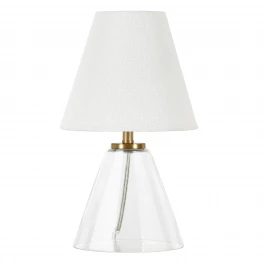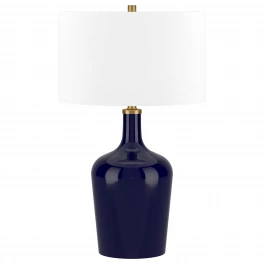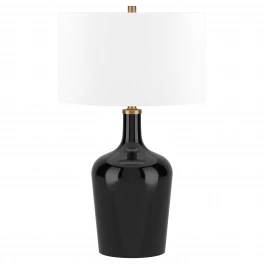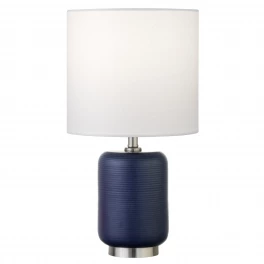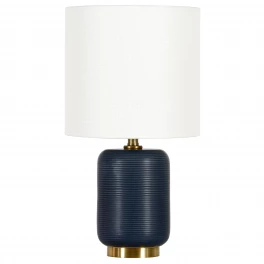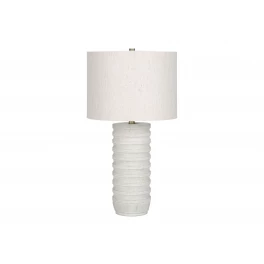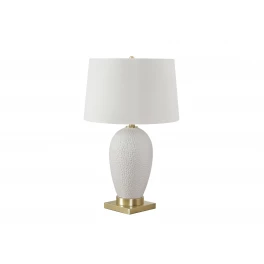The circuit breaker is a tried and tested application to your home. Although having just one is more than just sufficient, electrical breakers will always have capacities that shouldn’t be overhandled. Typically, homeowners reinstall new electrical panels either to update their home or wanting to upgrade the ones they already own.
Age does affect the breakers and if they aren’t replaced after a few years, it is age that will lead to an electrical fire. To provide the highest quality in both pragmatic and safety purposes, homeowners should think of either adding or replacing a new circuit panel. You should expect to spend an average between $1500 and $4000.
| Average Range | $1500-$4000 |
| Low-End Cost | $500 |
| High-End Cost | $10000 |
As you can see the low-end cost for replacing or upgrading a circuit breaker is about $800, while the high-end cost could go all the way up to and around $10000. There are different cost ranges that come along with different upgrades and factors that will affect the job. This will depend on the assessment of your situation and what kind of arrangements need to be made.
Table of Contents
- Cost To Fix Overloaded Circuit
- Difference Between Fuse Box And Circuit Breaker
- How Much Does It Cost To Upgrade A Circuit Breaker?
- How Much Does It Cost To Replace A Circuit Breaker?
- Cost Of Panel Component Replacements
- Cost To Replace Fuse Box With Breaker Panel
- Contrast Between AFCI And GFCI Breakers
- Cost of Replacing Fuse Box With Breaker Panel
- Electrical Panel Operations
- Federal Pacific Panel Replacement Costs
- Component Enhancements Costs
- Finding Multiple Estimates Through House Tipster
Cost To Fix Overloaded Circuit
Typically, homeowners will either have their circuit breakers upgraded or replaced if there are any complications that are overlooked. Luckily, the age of your breaker will not affect its condition, however, homeowners will have to spend money on either a replacement or an upgrade of the unit. Having the breaker upgraded will cost about $800 to $4000, while a replacement will probably cost about $1200 to $4500.
Some of the reasons for replacing a circuit breaker could be due to your city’s standards or codes. There are times when a homeowner might not have the proper breaker that is matched to the specifications of the house, or the unit might be operating at full capacity. In any of these cases, whether your unit no longer meets the standards, or whether your unit isn’t quite operating the way it should be, you’ll probably have to hire a professional to get the job done.
The risks of maintaining a faulty breaker, includes hazards with fire, smoke, or any other electrical dangers that could occur without the right supervision. Homeowners should look at the warning signs of a faulty breaker, one of which is the unit constantly tripping. This is an indication that either your system requires new wiring or there are other damages that may be affecting the breaker.
Besides replacing the unit, you may need to upgrade the breaker, in case the amperage isn’t sufficient in handling the entirety of your home. Homeowners should keep in mind that the limit to the breaker is about 80 percent and that the breaker should not exceed that limit, else the posing risks may be realized.
Difference Between Fuse Box And Circuit Breaker
A fuse box is an electrical panel that contains fuses, while circuit breakers are installed to flow electricity throughout the home. Both appliances will control the flow of electricity in a residential system, however, they’re designed differently.
Fuse Box:
- Less expensive
- Composed of different fuses that need to be properly fitted for ideal electrical load
- Somewhat risky due to an increased chance of exploding
Circuit Breaker:
- Less dangerous
- If the current is too high, the breaker will simply trip
- Additional protection from safeguards
- Generally the most preferred option
How Much Does It Cost To Upgrade A Circuit Breaker?
There are many upgrades that can be arranged if the breaker isn’t up to par with the daily electrical usage of your home. Before you can even think about upgrading your circuit breaker, you should consider all the factors that will apply to your panels, whether it be from the costs or from the electrical capacity of your home.
The performance of your electrical usage is dependent on the amperage of your panel. Try to imagine a glass of water. If you have the right amount of water, you won’t have to deal with any spills but if you overfill the glass, a puddle will be the result. This is the same concept that is applied with an electrical panel, except the outcome may turn into a dire situation. More often than not, you’ll see electrical services ranging between 30 to 400 amps.
100 Amps |
$800-$1200 |
150 Amps |
$1100-$1500 |
200 Amps |
$1300-$3000 |
300 Amps |
$1800-$3500 |
400 Amps |
$8000-$10000 |
100 Amp Electrical Panel Upgrade Cost
The cost range of upgrading your panel to a 100 amp service will probably be between $800 to $1200. If you’re upgrading your unit, you should think about the location of your home and the unit that you’re trying to get rid of currently. The 100 amp electrical panel generally provides power to smaller sized homes that do not have electrical heating.
Although the range of power might supply an electric range or a dryer with the output for general lighting and receptacle outlets, it isn’t the standard for new homes. However, a 100 amp panel is the standard requirement for a conventional space and is optimal for a normal-sized home.
150 Amp Electrical Panel Upgrade Cost
If you’re looking for an installation with a 150 amp panel, you’re going to have to spend about $1100 to $1500. The capacity of the panel is expanded, reaching additional parts of the home. Homeowners will usually choose the 150A as the starting point to any of the available electrical services that require amperage for their living spaces. Installation of the 150A service will require a rigid conduit, the minimum size for this is about 1 to 1 ¼ inches, a service entrance wire with a minimum rating of 100 amps, a service disconnect of less than three wires, six AWF copper conductors, and four AWG aluminum conductors for the bonding.
200 Amp Electrical Panel Upgrade Cost
Arranging an upgrade into a 200 amp service will probably cost you about $1300 to $3000. You’ll have to consider what kind of panel you had before since this will ultimately affect this price range:
-
Current service
-
Fuse box or circuit breaker
-
Size of your spaces
-
Whether the wiring needs to be changed
-
Whether you’ll require a permit or not
In most cases, these factors will affect the costs of panels that are 200 amps or above, so make sure to check what kind of unit you own, what its features are, and the size of your home. Homeowners that are upgrading to a 200A panel will be given the capabilities of using larger appliances and even entertainment systems.
300 Amp Electrical Panel Upgrade Cost
Making the necessary upgrades to a 300A panel will probably cost you about $1800 to $3500. Although this is a more uncommon upgrade that is usually considered, it is probably one of the most useful upgrades to plan for. Homeowners that consider the 300A upgrade usually want this kind of set-up for spaces expanded from the house. This kind of panel is used to power recreational spaces while powering the home itself.
400 Amp Electrical Panel Upgrade Cost
While the 400A service is quite an extravagant upgrade, households that are fairly larger will benefit from this kind of panel. The cost range will probably be estimated between $8000 to $10000. Although this is quite an expensive investment, this kind of amperage is used for colossal areas with the inclusion of special equipment and electronics. Using the 400A panel will mean that you require a very large output of energy.
Instead of an actual 400A unit, the home that needs that much electrical power will have two 200A panels at both ends of the property. If this is the option you’re considering, you will probably have to contact your electrical company and update the meter base and the wiring throughout your home.
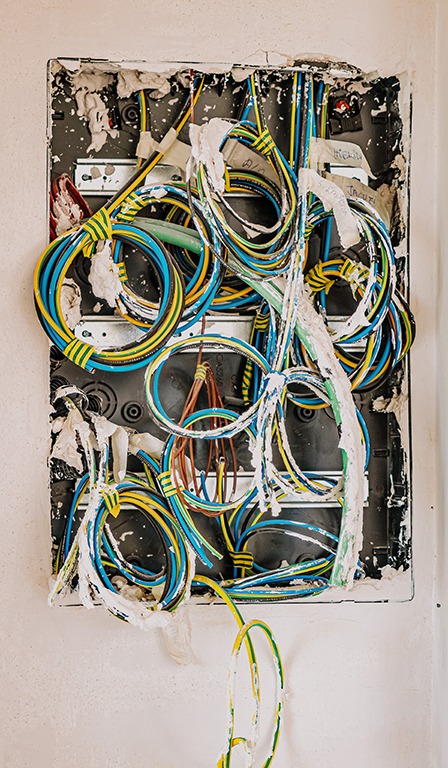
How Much Does It Cost To Replace A Circuit Breaker?
One of the most typical projects involving the wiring of your home is replacing your circuit breaker. This is due to the fact that wires are usually the most overlooked part of the process. Depending on the kinds of replacements you’re looking to make, the cost range will vary according to the amperage of the replacement model. Every electrical panel will have a labor cost associated with the panel cost itself.
100 Amps |
$1200-$2500 |
125 Amps |
$1700-$2700 |
150 Amps |
$1800-$3000 |
200 Amps |
$3500-$4500 |
100 Amps
Homeowners will probably have to spend between $1200 to $2500 for the labor costs associated with replacing the 100A service. Including the panel itself, the overall cost range will probably be about $1300 to $2700. This type of breaker is designed for homes that retain minimal usage. Essentially, homeowners that don’t require as much electrical usage will opt for a 100 amp breaker.
125 Amps
The labor cost to replace a 125 amp electrical panel will probably be about $1700 to $2700. The total for this replacement job will probably be around $1850 to $2950. The 125A service is for moderately smaller spaces. Typically, this kind of panel is replaced due to complications with rust or corrosion. Keep in mind that although the increase in amperage may increase the electrical capacity in the home, it will only make a very slight difference.
150 Amps
On average, the labor cost for the 150A service will range between $1800 to $3000, however, if you include the panel cost, the final estimate will probably be around $1950 to $3400. There are homeowners that confuse the concept of the panel standard. The minority of homeowners might misconstrue the idea that a 150A panel will be an adequate supply of electricity for a moderately-sized home, however, homeowners should always read the city code to assess whether the 150 amp panel will meet the standard.
200 Amps
Homeowners that need to have a 200A panel replaced will be expected to spend about $3500 to $4500, while the included panel cost will result in a total cost ranging from $3700 to $5300. The 200A panel is typically the standard for a conventional, normal-sized home. This is especially true if there is a number of appliances and electrical devices being used on a daily basis.
Cost Of Panel Component Replacements
There are costs based on the components that you may need to replace. Each part of the breaker will have ranges to remove and to replace. Unlike the possible repair projects that can be planned and arranged on an average major appliance, a repair for the panel can only really be done by replacing the parts. In certain cases, a breaker might not be the issue and one of these three parts may be the root cause of your power failure.
Breaker Switch Replacement Cost
Making the necessary replacement part for your switch could range between $200 and $250, this estimate is based on both labor and material costs. The main purpose of the breaker switch is to keep the electricity flowing throughout the panel. However, they’re essentially made to trip and break the current in case of an emergency or if there is an issue that may concern you.
Main Breaker Replacement Cost
While both the labor and part cost of replacing the main breaker will likely range from $200 to $300, it is a crucial component that turns off the power completely. It is a pivotal part of your electrical system because if the system becomes overheated, a fire can break out. Examine the breaker and find out if the condition of the main breaker is well maintained.
Meter Box Replacement Cost
Typically, the meter box is located outside of your home and measures the amount of electrical output that goes throughout your home. The cost of replacing this part will probably range between $500 to $700. Keep in mind, the installation of this component needs to be airtight and resistant to weather, but most importantly, it needs to be secure from intruders. One indication that identifies whether you need a replacement for your meter box is the touch. If you touch the light switches or outlets and you’re getting shocked, it’s probably the biggest warning sign that your meter box needs replacing.
Cost To Replace Fuse Box With Breaker Panel
Making the necessary replacements by switching out a fuse box with a breaker panel is the necessary approach to keeping your home intact. You’ll have to spend about $1500 to $4500, and this range will probably be determined by the amperage of the unit you decide to install. As briefly mentioned before, the major difference between the two appliances is safety. Due to the designs of a fuse box, homeowners are likely going to have to spend an enormous expense if a fire breaks out.
Contrast Between AFCI And GFCI Breakers
There are three different types of circuit breakers that will cost about five times more than the usual trip breakers, ranging from $20 to $100 per panel. The labor cost for installing either the AFCI or the GFCI circuit breaker will range between $130 to $180.
Arc Fault Circuit Interrupter
This is the type of circuit breaker that will alert you if there are high levels of heat, this is typically the result of arcing. Homeowners will encounter arcing if a mouse chews on your home’s wiring or if one of your appliances connected to the circuit overheats. Typically, the AFCI is used to replace the conventional breaker in a panel. It is still somewhat a relatively new technology being used, however, they’re not only essential for ensuring safety, but also a very sufficient resource for your living space.
Essentially, the major difference between the AFCI and the standard breaker is that the interrupters work as a “smart” device. Composed of small filters and logic mechanisms, the AFCI detects the arc before it even heats up. This way, any sparks produced by the breaker are prevented. Automatically, the AFCI is shut off almost instantly.
Ground Fault Circuit Interrupter
The GFCI outlet is most essential when water is close to the unit. Homeowners that live near a possible flood zone will want this kind of breaker since it shuts the power off when the water creeps close to a dangerous vicinity. In fact, the response time of this process is about 1/40th of a second, shutting off all hazardous electrical devices and materials to ensure the best protection for yourself and your loved ones.
Cost of Replacing Fuse Box With Breaker Panel
If you have a fuse box installed to your home, you’re going to want to think about replacing it with a breaker panel. This sort of project will probably cost you about $1100 to $4500, however, as mentioned above, this price range will vary depending on the kind of amperage you’re looking to install. A breaker panel is typically the modernized electrical system that flows power throughout the entirety of your home while maintaining preventative measures to control any risks or dangers.
Briefly mentioned above, both appliances might have the same purpose of powering the home but the major difference between them is the safety that the breaker panel provides. It’s quite common to replace the fuse box with a breaker panel, especially if you’re renovating an older home.
Fuse Box:
Advantages
- Cheaper than circuit breakers
- More sensitive to current
- Fuse box is replaceable
Disadvantages
- Needs to be replaced when tripped
- Not enough output for most modern appliances
Circuit Breakers:
Advantages:
- Able to easily reset
- GFCI capabilities
- Applicable with modern appliances
Disadvantages:
- Less reactive to current changes
- Costlier to replace
- Needs a certified electrician to install or replace
Cost To Relocate Electric Panel
If you’re feeling frustrated at where your panel is positioned, you can spend about $800 to $4000 for a professional electrician to come to your home and help you move it from where it is to where you want it to be. The job will probably involve a lot of rewiring work since the wires will need to be installed in the area preferred. If there are wires already installed, you’ll probably only have to spend the minimum end of that estimate.
Indoor Or Outdoor Electrical Boxes
Hiring an expert for either installing your electrical box indoors or outdoors will probably range between $800 to $4000. Typically, the box is often placed in the outdoor part of your space. This is in case of emergencies. Another reason as to why homeowners keep their electrical boxes outside their home is due to the electric meter. Since there is a sense of convenience with installing both the box and the meter outside, homeowners will move them next to each other.
However, keep in mind that the placement and positioning of these two appliances are typically standardized by the National Electric Codes. Through the National Fire Protection Association, there are guidelines that homeowners must follow which apply to the various building codes throughout the country. For this particular reason, homeowners are required to check their municipal codes to ensure that the process is being properly followed.
Electrical Panel Operations
The curiosity of how an electrical system works will come from the issues they may need resolved. In some cases, the homeowner may be dealing with a problem with their outlet or the appliance may not be working properly. By figuring out how the electrical panel works, you could make it easier on both yourself and the electrician you decide to hire for any corrections that need to be made.
Essentially, the electrical lines that are running throughout your neighborhood will be running the power along the various paths into your home’s outlets. The electrical panels are like a gateway where the power is being transferred to, and then the flow of the electricity is sent to the various parts of your home.
Most common signs you need to replace your electrical panel:
- Continuous tripping: Power goes out every time a homeowner runs multiple circuits at once
- Fuses: Mentioned above, if you have fuses set up as your electrical system, you’re going to want to update the outdated equipment
- Amperage and wiring: If the amperage of your panel doesn’t match the wires running along your home then you’re going to have to deal with a lot of errors
- An incorrect appliance: Plugging in certain appliances may disrupt the flow of electricity, due to some modern appliances requiring more amperage, one of your newer appliance units might be causing an issue
- Rust: Although age doesn’t affect the panel, moisture and humid climates may lead to a rusty panel
- Burning smell: This might be indicative of a fire or a possible chance at a smoking hazard, be wary of this sign and try to find where the smell is coming from
- Buzzing sound: If there are buzzing sounds that you’re hearing from your circuit breaker, then you may want to take a look at the date you initially installed it
- Flickering or dimming lights: Your lights may be flickering or they may not be working with the right kind of brightness, you may need to figure out what is causing this issue
- Odd-colored outlets: Discoloration is quite a big sign that there is something seriously wrong with your system, it could be due to overheating or there may be an issue with the flow of your electrical currents
- Melted wires: Examine your wires closely. If any of the other signs are occurring, your wire might be overworked and you may want to inspect the panel for melted wiring
Federal Pacific Panel Replacement Costs
Homeowners should consider which panel they currently have installed and typically, there are two main competitors in the market, either Federal Pacific Panel or Zinsco. After figuring out which one you may have, there is information regarding the two.
Federal Pacific Electric Panels were a commonly used appliance from the 1950s to the 1980s, however, due to the shift in time and the modernization of the electrical system, these are no longer considered the standard. The Zinsco units were also a popular option to install in the 1970s. Although both panels are still a commodity amongst older homes, homeowners should know that both units could start a fire.
If you’re a new homebuyer, or if you’re just concerned about your electrical system, make sure to check whether you have either of these panels installed. More often than not, you’ll have to replace them if they’re already implemented into your home.
Component Enhancements Costs
There are certain enhancements that can be arranged to the roster of your circuit breaker. Depending on the kinds of parts you want to repair or make improvements with, you’re going to have to spend a certain amount for the inclusion of these services. Find the electrician that you think is more than capable for the job and find the correct estimates for the project.
Wiring Repair Costs
Depending on the status of your wires, you may need to spend about $6 to $8 per linear foot for the installation of your wires. While the age of the panel may not affect its condition, the age of your wiring will most likely affect the rest of your electrical system if left unchecked. You’ll be glad you changed the wires before something even worse can happen to the rest of your home. Hiring an electrician for this job will vary through their level of expertise:
- Apprentice: $40-$50 per hour
- Journeyman: $50-$70 per hour
- Master: $100-$120 per hour
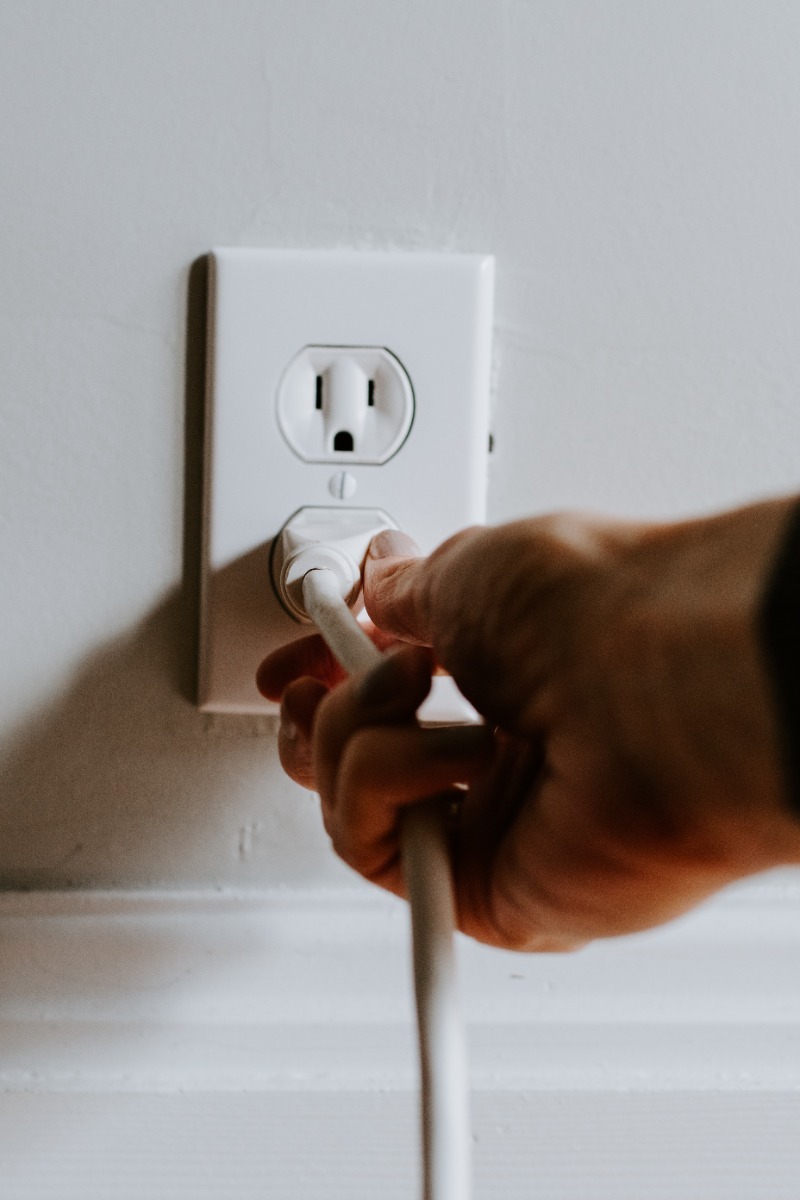
Subpanel Installation Costs
A subpanel installation will cost about $100 to $400, just for the materials alone. Although this isn’t as big a service as the other mentioned services provided in this section, a subpanel is quite amenable to the workings of your living space. Rather than focusing the energy to your home alone, the subpanel will employ energy to any secondary buildings or areas near your property.
The subpanel system also transfers and separates energy to larger building spaces like an apartment or a workshop. However, the cost of this installation will depend on what the size of the area is and the location of the project as well. You should expect a cost range that resembles the cost range of having a standard electrical panel installed.
Former Unit Removal Costs
To remove your former unit, you’ll have to spend about $40 to $120 per hour since the labor is the majority of the estimated range. The majority of this project will probably already be associated with the installation, but homeowners should keep in mind that removal is a separate service that requires a sufficient amount of time and effort.
Copper Grounding Costs
Before the panel can even be installed, your electrician will notify you that the panel needs to be grounded with a specific type of wire. The most common wire for this kind of job will cost you about $1.50 per linear foot for the materials. It’s quite the benefit to use copper grounding to lessen the chances of electrocuting yourself or your loved ones or from fire. Grounding will assist you in stopping the flow of power through the system.
Schematic Drawing Costs
A layout of your home designates which components and parts of the spaces are going to be arranged and constructed. Through this layout, a schematic can be drawn to determine where the electrical wiring is going to be installed throughout your home, making any possible replacements or repairs that much easier.
Finding Multiple Estimates Through House Tipster
There are many different jobs that need to be done to have this project completed and with the use of our web tool, you can find the right professionals for the work. By using House Tipster, you can use two main functions that will make your search all the more easier. Our web tool allows our users to find the right professional near their areas with the right kind of preferences and expertise they had in mind.
Our chat function allows the user to directly message the businesses in our listings to find out about estimates, services, and any other business inquiries that the user may want to ask. Our reviews function allows the user to find vast inventories of previous projects that were done in the past, giving the user the liberty to choose the professional that matches the user’s tastes and styles.
For whatever project or renovation that needs to be completed, House Tipster can lend you the hand that will take an extra load off your back. Our web tool is the perfect online resource into finding you the listing you need. So what are you waiting for? Use House Tipster to finish what you started.
Featured Photo By Troy Bridges From Unsplash




